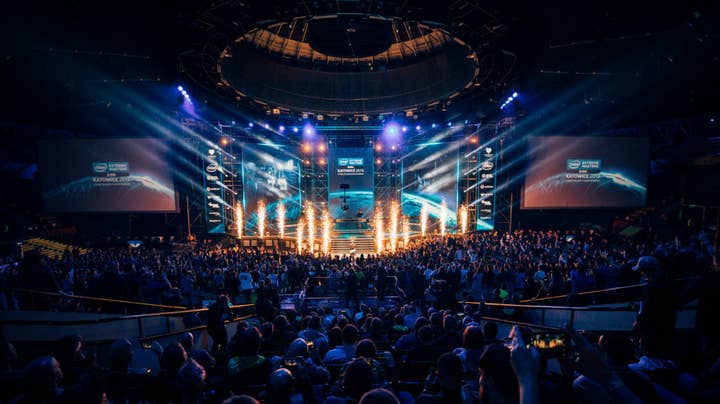A pandemic proved that esports is more vital than ever for entertainment | Opinion
As the last sport left standing, esports is in a position to rally fans, new users, and curious onlookers
Disruption is what moves the needle forward. This is something that applies to business and it teaches us that we cannot deny the evolution of tomorrow. This is rightfully applicable to esports as well and the lessons it has taught us over the course of the COVID-19 outbreak. What esports made evident is that in a crisis, it is able to quickly adapt and thrive, while the platforms of old fall behind.
Throughout the world of professional sports, many traditional leagues such as the NBA, MLB, NHL, MLS, and NASCAR shocked the world when they decided to suspend their practices and, in some cases, their leagues. As for esports, the impact hit just as hard -- especially on those with a physical presence. Numerous events have either been cancelled or postponed due to the pandemic, including events for DOTA 2, League of Legends, Overwatch, and many more. For a brief time, it seemed esports would follow the full suspension model being laid out by the traditional sports.
One article even assumed the cancellation for Apex Legends would be a "final blow" to the game's pro scene. Some have pondered that a dive in revenue and tournaments with no audiences would likely destroy the industry's footprint and any chance at legitimizing itself in the big leagues. While one can appreciate the sentiment, it turns out that esports is proving much more resilient to this crisis than other professional sports, and may be demonstrating the model for weathering a pandemic crisis such as this.
The esports industry must see and react to what is an enormous opportunity as the only sport left standing
The nature of competitive gaming allows for more flexibility to meet demand while operating remotely, and many events, leagues, and competitions pivoted towards online participation and viewership -- two well-known Counter-Strike: Global Offensive leagues, Flashpoint and ESL Pro League, for example. The play-from-home format is what esports was created from in the first place, and the results for viewership in these competitions is booming -- Counter-Strike itself has also surged to one million concurrent players.
Beyond CS:GO, let's take a look at the numbers breakdown according to Forbes:
- Steam is seeing a record 20.3 million concurrent gamers.
- CS:GO's Intel Extreme Masters in Katowice had a peak viewership reaching more than one million. This makes it one of the most watched tournaments in the esports history.
- Call of Duty: Warzone saw 15 million players in its first three days.
- Chinese live streaming service Douyu experienced increased viewership of the country's most popular games.
More players means more viewers and audience engagement. Where other traditional sports see a crisis for their operations, the esports industry must see and react to what is an enormous opportunity as the only sport left standing.

What's particularly interesting about the esports phenomenon during this time is the crowds and new faces that are flocking to it. One trend we've seen is the migration of traditional athletes to online streaming platforms. The NBA and its stars are hosting their own competitions and delivering entertaining results for fans of basketball and esports.
The industry may be able to sustain its growth rather than cutting back on projections
Even more surprising is that NBA2K games are being broadcasted on television in the place of traditional games. Another example is F1's transition to bringing their racers to the world's computer screens; backed and promoted by the F1 league itself, racing's best stars took to Twitch to compete in a virtual tournament.
A second trend is the rise of youth and amateurs in esports. Many kids in schools or part of league teams are moving to online gaming to continue social interaction and competition. Parents are beginning to engage with their kids and their esports gameplay in much the same way they do for their traditional sports games.
At GYO Score, we've taken notice and adjusted our esports analytics platform towards connecting players and parents with interactive esports opportunities. Our recent activation -- the Keep Kids Playing campaign -- is an effort to enable Indiana Soccer's youth organizations to continue playing with their teammates in esports competitions during the quarantine period. For Indiana alone, this represents 60,000 traditional grass soccer players who now need a way to keep connected to their teammates and their coaches, and we see esports as that opportunity.
The last trend we're seeing is the growth of esports platforms and streaming platforms in the "stay at home economy." In the past week, Torque Esports had a 52% growth in website visits and 38% growth in daily logged-in users. Twitch has also surged in app downloads from Greece, Italy, Spain and the US. Additionally, GYO Score itself has seen a near 200% increase in website traffic in the weeks following the outbreak, compared to the previous weeks.
With or without physical events, gamers will continue to compete with one another online and seek out that online content
When accounting for all of these trends, the convergence of gaming and sports can truly capitalize on these new audiences. This notion is not a secret for the entertainment industry -- with Neilsen joining the fray to track audience viewership, it'll be interesting to see how others jump on the bandwagon.
Since the shutdown began en masse, Twitch viewership has reportedly been up more than 10% while YouTube Gaming has increased by 15%. While on the surface those numbers may not seem dramatic, a permanent increase in viewers could help drive revenues even further from esports primary monetization stream -- sponsorship. For an esports industry projected to account for more than $1 billion in revenue in 2020, these numbers show that the industry may be able to sustain its growth rather than cutting back on projections.
Over the past few weeks, many people have joked that the video game community has been training for the COVID-19 shutdown for their entire lives. While we do not wish to make light of the tragic and confusing conditions sweeping the world, there is some truth to the notion. Gaming was born in basements and living rooms, and it was our desire to connect and compete with one another online that ultimately drove gamers to create and support the notion of esports.
Esports emerging into an activity that fills hotels and arenas and stadiums has been the new phenomenon, but it never took away from that online experience that still drives players today. With or without physical events, gamers will continue to compete with one another online and seek out that online content.
So while esports is naturally insulated against an erosion of its existing fan base, the opportunity now must be to take this unique situation in order to rally new fans, new users, and curious onlookers. More eyes than ever before are available for the digital world to capture, and esports is poised to do just that. Can esports be the industry that actually figures out a way to surge in the middle of a pandemic? Only time will tell, but we know for certain that gamers won't be backing down from the challenge. They were born ready for this.
Shawn Smith is the CPO and one of three founders of Harena Data, an esports data acquisition and analysis company. Harena Data created GYO Score, an esports sabermetrics platform aiming to help competitive athletes find scholarships, team opportunities, and employment in the esports industry. Since its creation, GYO Score has helped more than 200 esports athletes receive college scholarships relating to esports and continues to grow every day.
